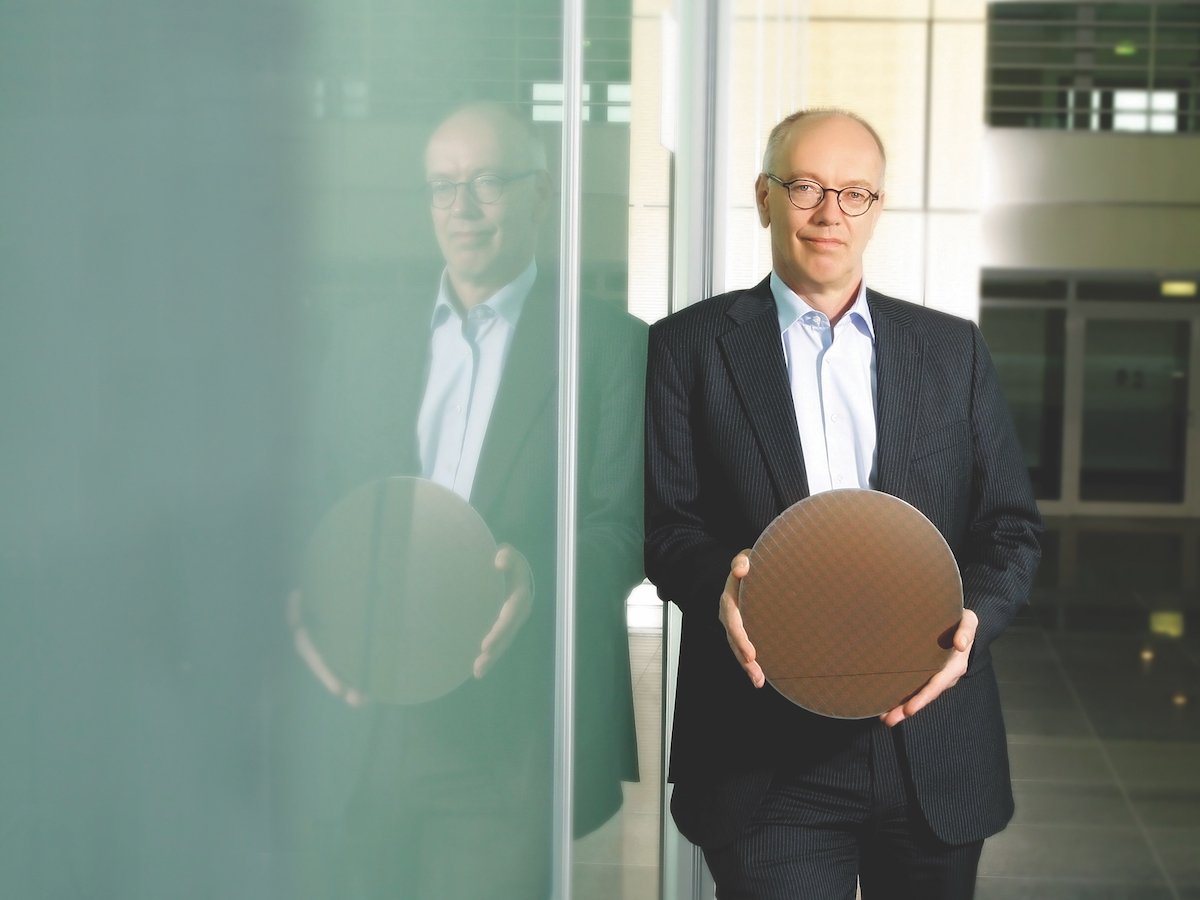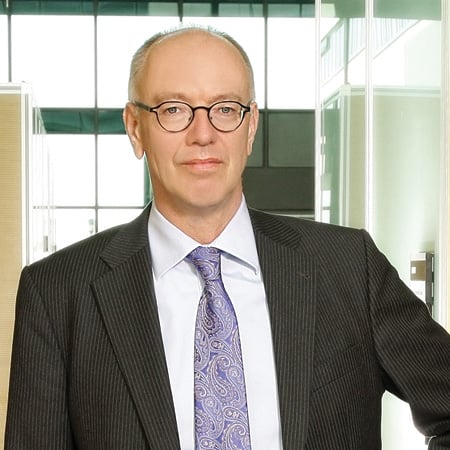Every industry has its defining moments, although it seems like the semiconductor industry has had more than most. Rutger Wijburg, the Senior Vice-President and General Manager of GLOBALFOUNDRIES Fab 1 in Dresden, Germany, reflects on one such inflection point, referring to semiconductor and software design company ARM. “Remember what happened with ARM?” he asks. “The whole world was working on x86-type microprocessors in PCs. ARM had lost previous duels in the USA with Intel, so they went off and developed a new concept based on easy accessibility of the IP which, at the same time, was
driving power to a much lower number compared to the x86 approach, and the cost was lower.”
The result? “ARM showed that it’s not just performance that matters but also power efficiency and costs. It enabled people who would have otherwise had to work with AMD or Intel to design their own microprocessors for new businesses, such as smartphones, that are now so big that today the world would not work without ARM.”

Rutger believes that the global semiconductor foundry’s 22FDX® platform, currently in development in its Dresden fab, has the same disruptive opportunity. “The PC — and more recently smartphones — has been driving the whole semiconductor industry for many years, but its importance is waning,” he explains. Yet the company is already preparing for the next technology revolution, which will bring with it an entirely different set of challenges and needs: the Internet of Things.
“If you are able to deliver on technology which is extremely good on power but also brings down the costs, you can expect very big rewards,” says Rutger.
“The Internet of Things will be the main driver of volumes in semiconductors,” he predicts. “For that we are developing special technology which is extremely energy efficient and very cost competitive because of the way we build it. That technology is the 22FDX.We believe it has the potential to be as disruptive as ARM has been in the past.”
“It’s not just performance that matters but also power efficiency and costs.”
– Rutger Wijberg
Previously the manufacturing arm of Advanced Micro Devices (AMD), GLOBALFOUNDRIES was launched in 2009. After a career spanning more than 25 years in the semiconductor industry, Rutger was appointed in 2011. He has experienced firsthand the company’s very own inflection point. “I joined the Dresden site in the midst of a big transformation from where we worked for one customer, AMD, with one product and one technology. Over the years, we’ve become a real foundry with multiple customers and multiple products, working in a more complex manner.” With the transformation a success, today GLOBALFOUNDRIES has a broad technology portfolio and operations in Germany, Singapore and the US. The company is now in a position to compete with its biggest opponent, market giant TSMC from Taiwan. “We’ve achieved what people had thought was impossible to accomplish in Europe,” he says. GLOBALFOUNDRIES’ award-winning Dresden facility is the biggest on
the continent.
By acknowledging that “the rise of Apple and Samsung has changed the whole way our business works,” Rutger identifies another transformation he has witnessed. “In the past, Intel made all the money with its microprocessor, but today we speak about companies like Uber who, three years after starting, are worth US$50 billion on the stock market.” Why? “We’ve moved on from the technical innovation of the chip to the application on the surface.”
Industry has to adapt accordingly. “It’s no longer about being alone with your excellent technology. Instead, the focus is on partnering with your customers, including the end customer, to ensure we are enabling the applications and business models that are out there. It’s about bringing companies together, both lower in the chain and higher in the chain, and developing applications together.”
Where we will see this manifest most visibly is in the Internet of Things, says Rutger. “I envisage enormous amounts of innovation, ideas we have never even considered before, all put into application. These intelligent systems of tomorrow will all be enabled by semiconductors and by the design in semiconductors.”



